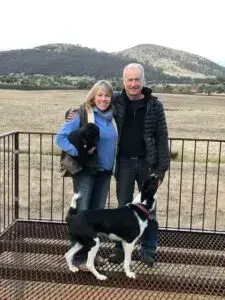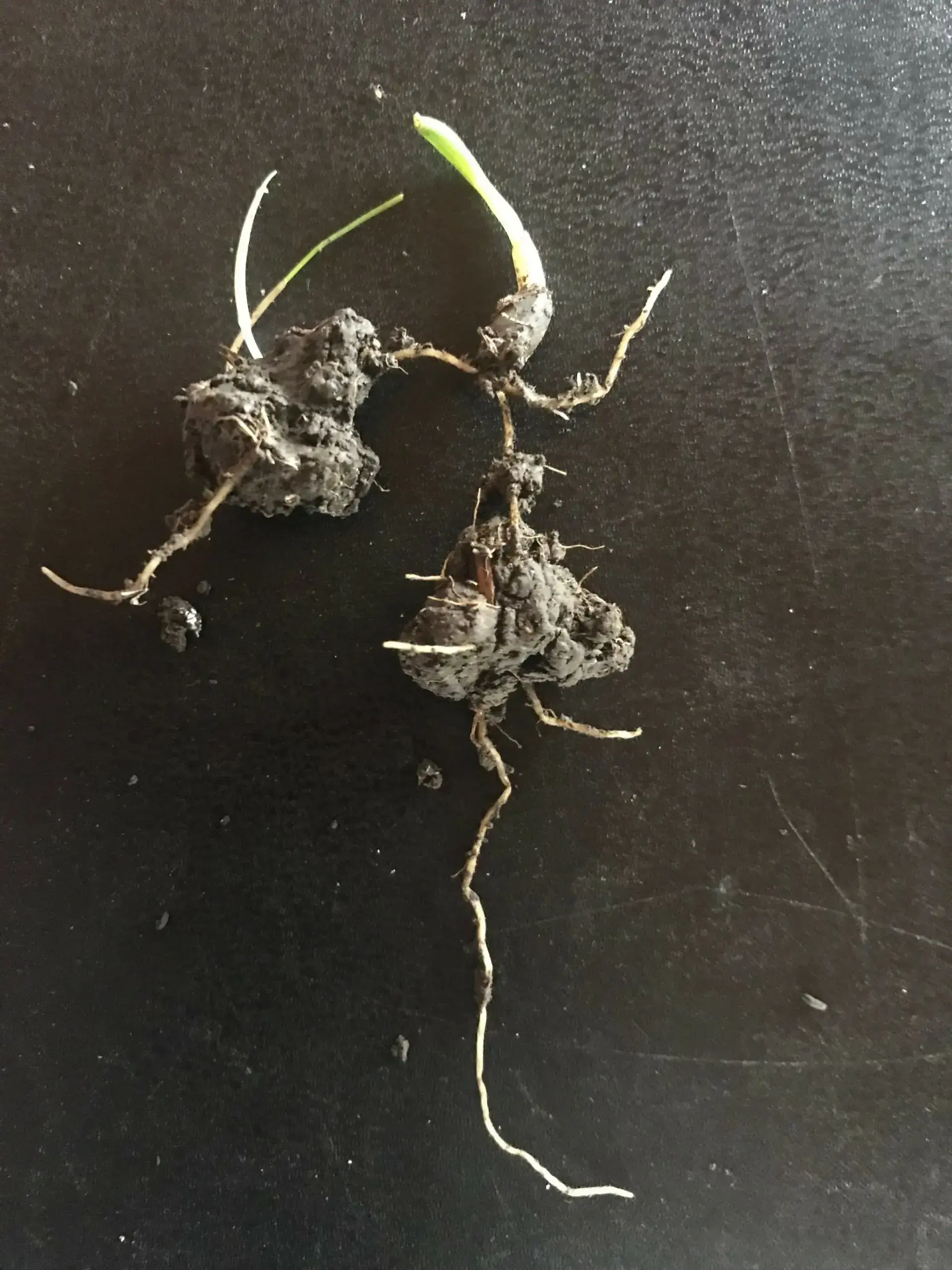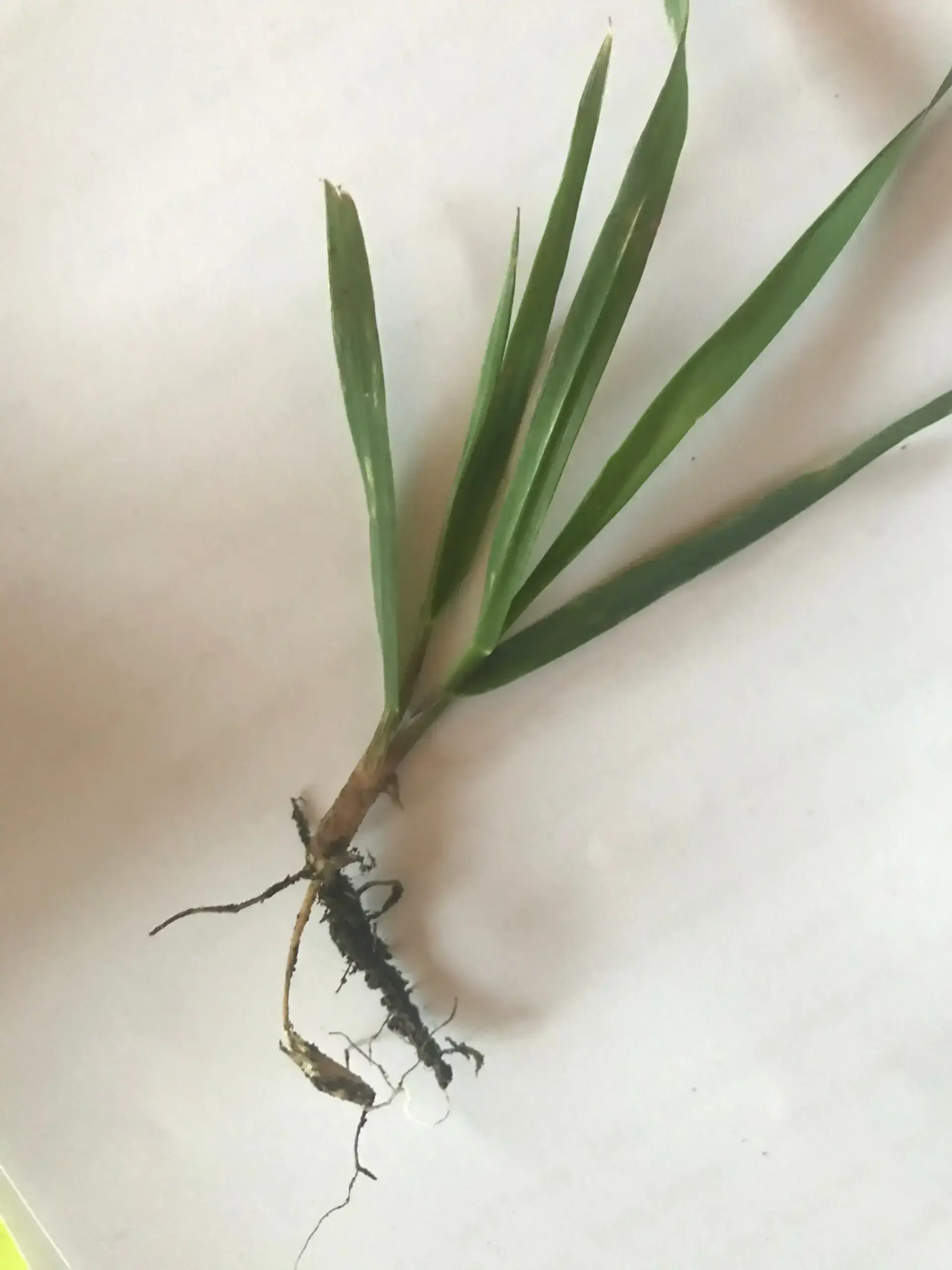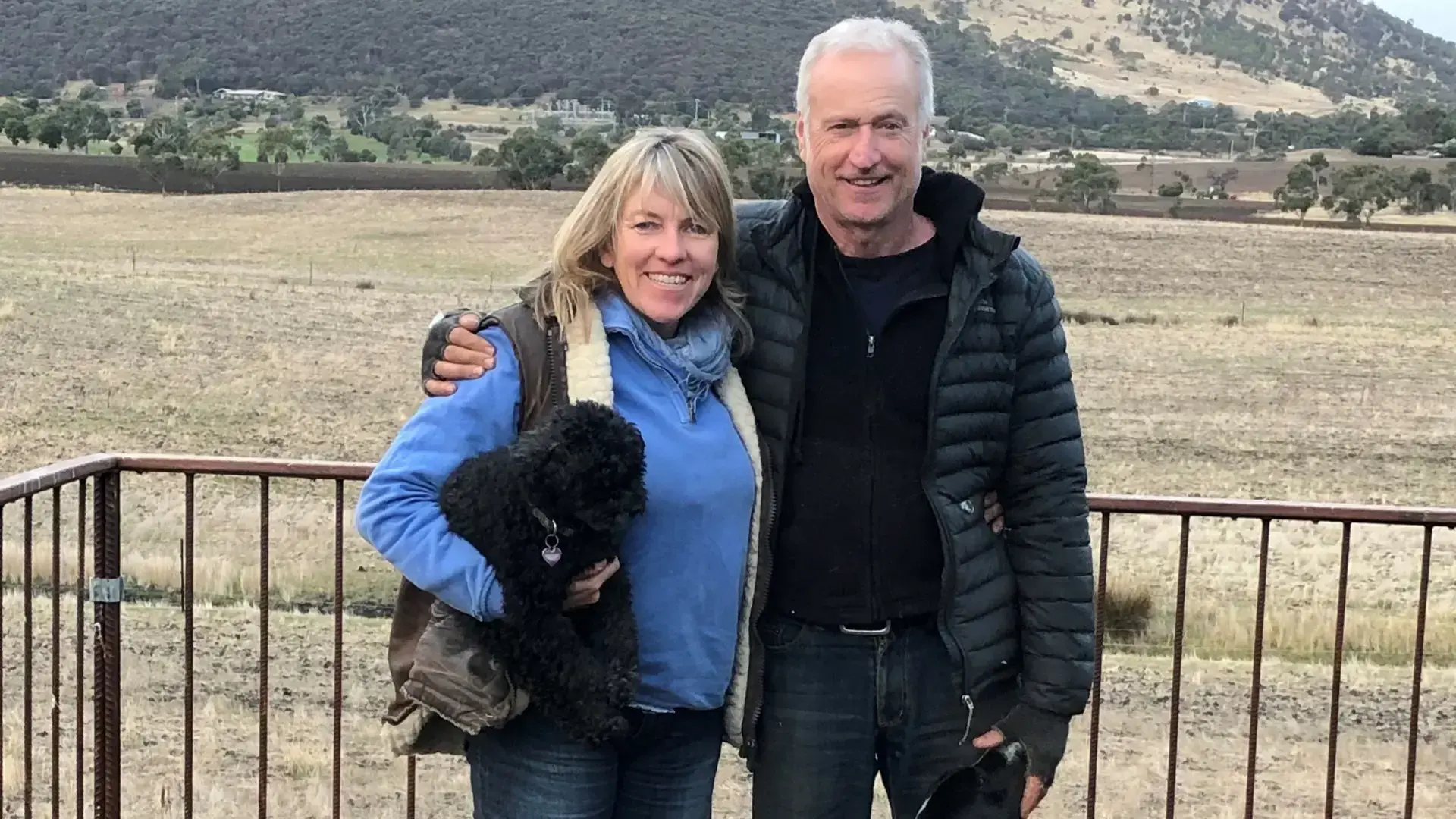Making the change- regenerating pastures both above and below ground

Tasmanian novelist, Rachael Treasure with her partner Daniel
Changing from a conventional, high input grazing system to a low input regenerative system doesn’t happen instantly and things may have to get a bit worse before they get better, as Tasmanian novelist and regenerative farmer, Rachael Treasure, discovered on the farm that she and her partner, Daniel, inherited four years ago.
“When we inherited our little farm near Richmond in Tasmania four years ago, the soil was really dead. No earthworms, no organic matter, it was a biological desert,” she said. “We made the decision to rest the land for a year to see what indicator plants (‘weeds’) returned. We chose to farm with zero synthetic fertiliser and pesticide inputs, and used high density mob grazing of sheep and cattle as a tool to cycle biomass back into the soil.”
The first year, the tap roots of thistles helped break soil capping and compaction, and areas were flush with clover and self sown oats. The third year the system really crashed,” Rachael said. “But the fourth year, self-recruitment of plants, including wallaby grass, began, dung beetles and a range of insects returned along with more plant diversity.
“We knew natural systems will repair themselves if managed correctly over time. We didn’t want to continue managing a system of high inputs of fertiliser and herbicides on single species fodder crops. This system may give good short-term responses and a faster return on investment, but then you are locked into a high input system with multiple, long-term escalating costs and diminishing landscape health and resilience,” she said. “Regenerating landscapes requires patience and a holistic mindset, with a focus on rebuilding the foundations of a healthy landscape – improving biodiversity, the soil microbiology and soil structure.”
After learning from Dr Christine Jones about plant-soil biota interactions – including the way in which plants and microbes interact and support each other through the exchange of sugars (made by the plants) and the provision of nutrients (made available to plants by soil microflora and fauna) – Rachael and Daniel decided to plant a multispecies mix into the pasture.
They made their own purpose-built drill, and on the advice of Colin Seis used a wide-spaced tyne to break the capping of the soil, and then direct drilled a 13-species combination including everything they could find in the veggie box and elsewhere; perennial Ryegrass, Upland Cocksfoot, Finesse-Q Tall Fescue, Hamua Red Clover, NZ White Clover, Trikkala Sub Clover, Lusa Persian Clover, Boston Plantain, Chicory, Rangi Rape, Pacer Leafy Turnip, Buckwheat, oats and Ryecorn. The seed was treated with a NutriSoil preparation, which included worm juice, seaweed extract and a coating of a mycorrhizal fungal stimulant.
“Daniel sowed the paddock in one pass, but we noticed the neighbours planting at the same time using three passes with three tractors – a cultivation, sowing and then rolling,” Rachael said. “After sowing we were a bit worried when the neighbours’ oats came up with a flush of green leaves and had started to tiller, yet our crop lagged behind, showing only a few tentative shoots.”
“I contacted Nicole Masters and she immediately told us to look under the surface – to dig up a few plants to see what was happening below ground. We did this and discovered that all the action was happening in the soil, hidden from view. Our plants had more root growth than leaf growth as they had plenty of energy reserves from the seed treatment, whereas the neighbours had lots of leaf growth but very little in the way of root growth as they were desperately needing to generate energy through photosynthesis from the sun. Having more root growth is going to make these plants more resilient to our harsh winter frosts, or from surface drying of the soil.”
Rachael’s plants
More root growth than leaf growth


Neighbour’s plants
Little root growth to leaf growth
”all the action was happening in the soil, hidden from view
Rachael and Daniel’s paddock is now coming alive with different shapes and sizes of leaves and plants, and they are feeling confident that these plants are well anchored with a solid root system. In order to build up their “stocking rate below ground” before increasing the “stocking rate above ground”, Rachael and Daniel are using native grass hay to feed their cattle and sheep, knowing that the native grass seed from the hay will in time germinate in the pasture once the microbiology of the soil is thriving.





